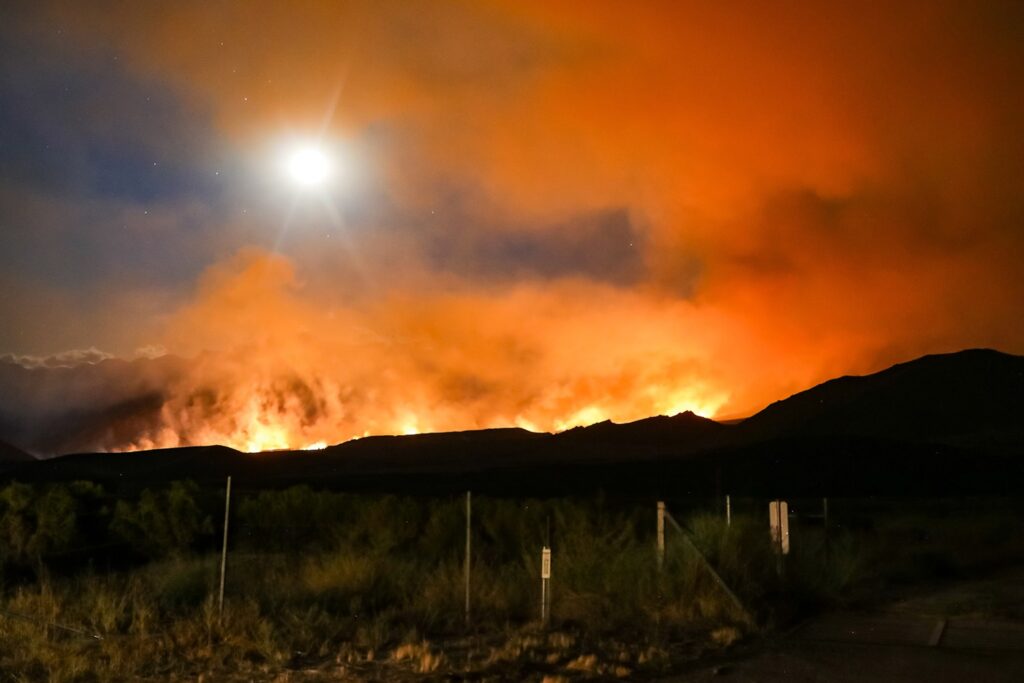The Thomas Fire was the second largest wildfire in modern California history.
by Jo O’Connell

It began on December 4, north of Santa Paula and within hours raged through the city of Ventura.
It burned approximately 281,893 acres and was only contained at the end of January 2018. My house was burned on December 5, along with several structures that were part of the nursery. In parts, Thomas was a firestorm, powerful enough to create its own weather. It left the local terrain so completely blackened that fire experts described it as “moonscaped.”
From the Fire, I learned that fire retardant plants absorb more heat of an approaching fire without burning. Fire retardant trees can trap embers and sparks and reduce wind speed near a house. Fire retardant groundcovers can slow the travel of a fire through their leaves. Smooth barked trees will not burn as readily as stringy or rough barked trees. Plants with high moisture or salt content and/or low oil content will take more to ignite. Plants with high moisture or salt content and/or low oil content will burn more slowly.
To create a modern home with fire resistant planted landscape, maintenance makes a difference. Remove lower branches from trees. Don’t allow branches to connect to the roof or part of any structures. Remove dry or dead material from around plants before fire season. Prune shrubs to keep foliage fresh and green. Keep plants around house and structures well irrigated. A well-watered hedge on the fire prone side of the house can a) reduce radiant heat b) prevent spread of fire to the house. Replace lawns with inorganic mulches to help to slow the spread of fire, e.g. DG or gravel. Plant fire retardant trees around structures as a shield. Test the fire resistance of plants by throwing a few leaves into a BBQ to see how they burn!
Acacias that survived the Thomas Fire at my house include Acacia longifolia, A. cyclops, A. elata, A. floribunda and A. viscidula. Hakeas that survived the Thomas Fire at my house were Hakea salicifolia, H. archaeoides, H. trineura and H. denticulosa Other plants that survived were Leptospermum petersonii, Melaleuca armillaris, Stenocarpus sinuatus and Tristaniopsis laurina
